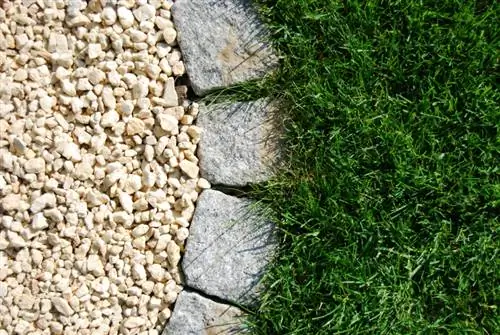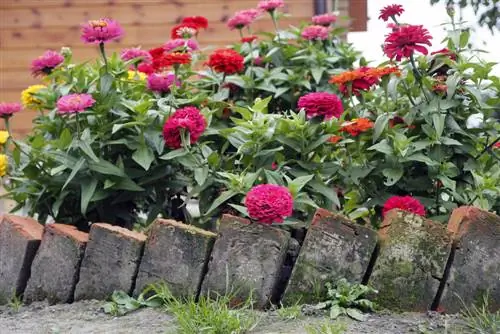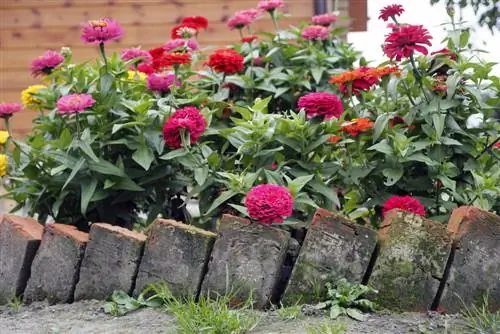- Author admin [email protected].
- Public 2023-12-16 16:46.
- Last modified 2025-01-23 11:20.
A well-maintained lawn tends to overgrow into neighboring beds. To prevent this, you should border the lawn edges with a bed border. This not only creates order, but also makes it easier to maintain the lawn edge.

Which materials are suitable for a lawn edge as a bed border?
To create a lawn edge as a bed border, materials such as English lawn edge, paving stones or bricks, metal, plastic or rubber are available. They help to separate the lawn from beds and make it easier to maintain the lawn edges.
The most common methods for lawn edging
- English lawn edging
- Paved lawn edge
- Metal lawn edging
- Plastic lawn edging
- Rubber lawn edging
The English lawn edge
It is most commonly found in gardens. The transition to the bed is fluid. To prevent the lawn from spreading uncontrollably, the lawn edge must be trimmed every four to six weeks with a sharp spade.
This is quite labor-intensive and makes lawn care considerably more difficult. To do this, place a straight board on the lawn and poke along it so that you get the straightest possible lawn edge.
Lawn edges made of paving stones or bricks
Lawn edges made of stones are also a particularly decorative border. Depending on your garden style, there are a variety of stone types to choose from. The edge can also be laid in curves so that you can create curved beds.
You can still place stone lawn edges even after the lawn has been laid. Use the spade to dig a trench that is as deep as the stones are long. Then insert the stones, fill with soil and tap them into place with a rubber mallet.
Metal lawn edging
If you don't want the bed border to be visible, metal lawn edges are the solution. Suitable materials are stainless steel, aluminum or galvanized steel. Although the profiles are very thin, they create an impenetrable barrier for the lawn. The robust lawn edges are simply driven into the ground with a rubber mallet (€40.00 on Amazon).
Lawn edges made of plastic or rubber
They are an inexpensive alternative to metal or stone as they are made from recycled material. They are available on rolls. To get them into the ground, you have to dig a groove with a spade.
Tips & Tricks
If possible, lay lawn edges made of stone, metal, plastic or rubber so that they protrude a maximum of two centimeters above the ground. This makes working with the lawn mower easier. You then don't have to trim the edges by hand.






